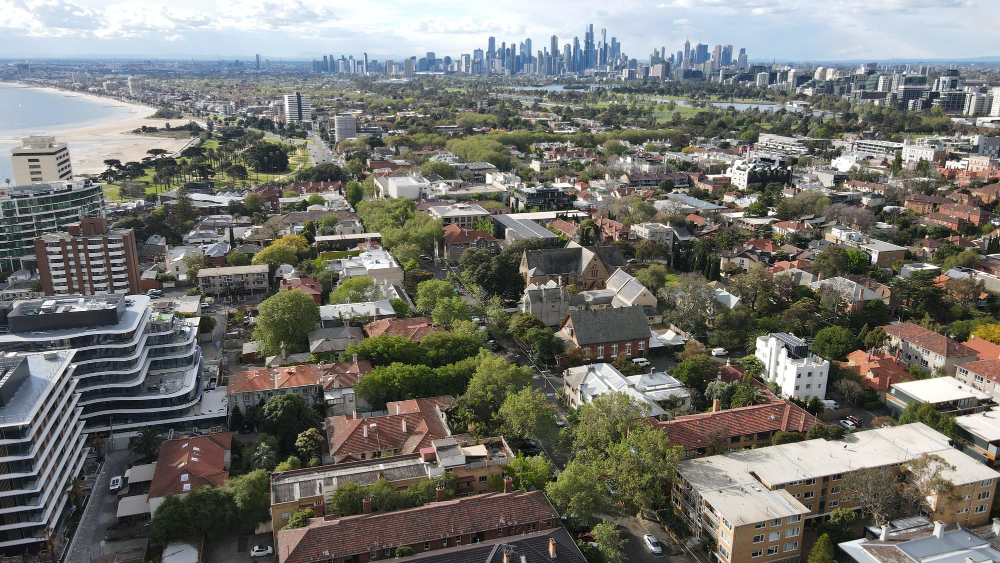For many Australians earning between $120,000 and $150,000 a year, life feels steady. There’s a good salary coming in, bills are paid on time, and there’s room for dinners out, nice clothes, a newer car, maybe even a holiday or two. On the surface, that looks like success.
Yet, behind the sense of security, there’s often little left over at the end of the month. The mortgage or rent keeps rising, the cost of groceries bites harder, and savings for a deposit or an investment property never seem to grow. This is what we call the middle-class money trap — being comfortable enough to spend freely, but not disciplined enough to build real wealth.
The trap doesn’t happen overnight. It creeps in as lifestyle inflation. As income grows, spending grows with it: a better car replaces the old one, dinners out become more frequent, the occasional splurge on a weekend away becomes routine. These choices feel harmless at first, but over time they erode the very cash flow needed to get ahead.
Breaking free from this cycle isn’t about giving up life’s pleasures. It’s about using income with purpose, so it works for you rather than slipping away. That’s where a clear strategy comes in.
At AbodeFinder, we help Australians move beyond comfort to create financial freedom through property investing. By focusing on the right suburbs, identifying growth opportunities, and aligning your spending with long-term goals, we guide you to turn your income into assets that compound over time.
If you’ve ever wondered why your pay rise didn’t bring you closer to owning an investment property or reaching your wealth goals, you’re not alone. The good news is that with the right plan and guidance, it’s possible to step out of the trap and start building a future that’s not just comfortable, but free.
Understanding the Middle-Class Trap in Australia
The Illusion of Comfort
On paper, earning between $120,000 and $150,000 a year looks solid. In many workplaces, it’s a benchmark of success. Yet in real life, that income doesn’t go as far as people expect.
By the time tax is taken out, the disposable income is far lower. Add in higher mortgage repayments, rent, rising utility bills, fuel, childcare, and groceries, and the leftover cash can feel slim. Inflation chips away at buying power year after year, while interest-rate swings can suddenly lift monthly repayments by hundreds of dollars.
Many middle-income households find that their salary covers daily living but leaves little room to save for a deposit, invest in property, or grow a safety buffer. The sense of comfort is often a mirage; it looks stable, but it isn’t building wealth.
Comfort vs Freedom
There’s a big difference between being comfortable and being free. Comfort means the bills are paid, the car loan is serviced, and you can enjoy dinners out or a holiday. Freedom means you have assets that generate income, less dependence on your salary, and genuine choice over how you spend your time.
The problem is that comfort often feels safe. It encourages people to stick to familiar patterns: spending as income rises, postponing investment decisions, and hoping that a bigger pay packet will solve future needs. Over time, that mindset blocks progress.
True freedom comes from directing a portion of income into productive assets such as well-chosen investment properties rather than letting lifestyle creep soak it up. It’s about making decisions today that create options tomorrow.
At AbodeFinder, we work with clients who want to make that shift. We help them see beyond the comfort zone, use their current income more effectively, and build property portfolios that can eventually fund their lifestyle rather than their job doing so.
Lifestyle Inflation: The Silent Wealth Killer
Wants vs Needs
Lifestyle inflation happens quietly. As income grows, so do spending habits. A family that was once happy with a reliable hatchback decides it “needs” a European SUV. A short local holiday turns into an overseas trip every year. Weekends away at luxury hotels become the norm.
Much of this is driven by ego or the pressure to keep up with friends or colleagues. We buy things that make us feel successful or fit in socially, but those choices rarely build wealth.
The difference between a want and a need is often overlooked.
-
A car that gets you to work is a need. Upgrading to a prestige model is usually a want.
-
A week’s rest is healthy. Turning it into a luxury resort escape twice a year can be a want.
-
Dining out occasionally is fine. Making it a default routine chips away at cash flow.
When spending follows emotions or appearances, it drains the surplus income that could have been directed towards deposits, investments, or debt reduction.
The Compounding Cost of Choices
Every spending decision has a long-term ripple effect.
Take a $5,000 luxury weekend away. It feels rewarding in the moment, but if that same amount had been placed into an offset account or an index fund and left to grow, it could be worth tens of thousands of dollars within a decade. That difference could cover stamp duty for an investment property, reduce your mortgage interest, or boost your deposit for the next purchase.
This is where opportunity cost becomes real. The dollars spent on appearances today could have been the capital that helps you step into the property market or expand your portfolio tomorrow.
At AbodeFinder, we show clients how to redirect everyday savings into meaningful investments. By prioritising assets that appreciate, such as well-chosen investment properties, over status-driven spending, you can turn ordinary income into a powerful wealth-building engine.
The Power Play: Mindset Shifts to Escape the Trap
Breaking out of the middle-class money trap starts with how you think about money, status, and long-term rewards. Many of the challenges aren’t just financial, they’re behavioural. By shifting your mindset, you can redirect the same income to work in your favour.
Give Up the Need for Approval
A big reason people overspend is the quiet urge to be seen as successful. A designer handbag, a flashy car, or a weekend at a luxury resort may look like status, but in most cases, it’s just a cost.
The real status is freedom, being able to choose when and how you work, having assets that generate income, and not feeling stressed about bills.
Shifting your sense of success from what you show to others to what you build for yourself is a powerful step. Once you stop spending to impress, you create room to invest.
Set Non-Negotiable Rules for Money
Freedom doesn’t come from earning more alone. It comes from keeping and directing a portion of what you earn.
A simple yet powerful rule: when interest rates fall, keep your mortgage repayments at the higher previous level. The extra amount reduces your loan faster or builds a stronger offset account.
Another rule: pay yourself first. Treat savings and investments as non-negotiable commitments. Only after these are funded do you allocate money to lifestyle spending.
These habits shift you from reactive to deliberate. They help you build momentum even when external conditions change.
Build a Personal Strategy
A strong financial strategy is personal and value-based. It’s not about copying someone else’s budget or chasing quick wins. It’s about asking yourself:
-
What do I want my money to achieve in five, ten, or twenty years?
-
Does this purchase move me closer to or further away from that goal?
Budgeting isn’t a punishment; it’s a weapon for progress. It highlights leaks, helps you capture surplus cash flow, and gives you the resources to invest.
At AbodeFinder, we work with clients to turn these insights into action. By matching their income, goals, and risk profile with the right property opportunities, we help them shift from reactive spending to strategic investing, one of the surest paths to genuine freedom.
Turning Income into a Property Growth Engine
Income on its own rarely delivers financial freedom. It’s what you do with it that matters. Too many Australians sit in the middle-class trap, spending most of their pay on lifestyle upgrades while missing the chance to build assets.
Following a structured property investing roadmap can turn ordinary income into a powerful growth engine. At AbodeFinder, we help clients take the next step: using a smart property strategy to move from spending to investing.
Focus on Assets That Grow
To move forward, you need to channel surplus cash into assets that appreciate or reduce your debt burden.
Two simple places to start:
-
Investment property: A well-selected property can grow in value over time while generating rental income.
-
Offset accounts: Directing extra cash into an offset reduces the interest you pay on your mortgage and keeps funds accessible.
Avoid long-term liabilities that tie up borrowing power, things like high-end car loans, expensive personal credit, or lifestyle debt. These reduce your capacity to invest when the right opportunity comes along.
Use Strategy, Not Guesswork
Buying property without a plan often leads to poor results. The difference between a property that grows steadily and one that underperforms can be hundreds of thousands of dollars over a decade.
A strong strategy starts with data-driven suburb selection:
-
Look for areas with growth potential, strong rental yields, low vacancy rates, and infrastructure investment.
-
Assess your borrowing capacity and timeline so your next purchase aligns with your overall wealth goals.
At AbodeFinder, we combine data analysis, market research, and buyer agency insights to help clients choose properties that suit their situation rather than relying on chance or sales hype.
Build a Portfolio That Buys You Time
The ultimate aim isn’t just to own one property, it’s to build a portfolio that compounds wealth and reduces reliance on your job.
When you invest in the right properties, each purchase contributes to your future cash flow and net worth. Over time, this creates a buffer against cost-of-living pressures and opens the door to greater choice: shorter work hours, more family time, or the freedom to pursue other goals.
Property, when approached strategically, is more than an asset class. It’s a pathway to genuine freedom — the kind of freedom that comes from having assets working for you rather than spending every dollar you earn.
Ready to move beyond comfort and start building real wealth?
The middle-class trap isn’t about how much you earn, it’s about how you use it. With the right strategy, your income can fuel long-term freedom instead of getting lost in lifestyle upgrades.
At AbodeFinder, we help everyday Australians create a clear property strategy that matches their goals, risk profile, and timeline. We’ll guide you to identify high-potential suburbs, optimise your borrowing power, and stay focused on freedom – not just comfort.
Take the first step today. Your future self will thank you.














